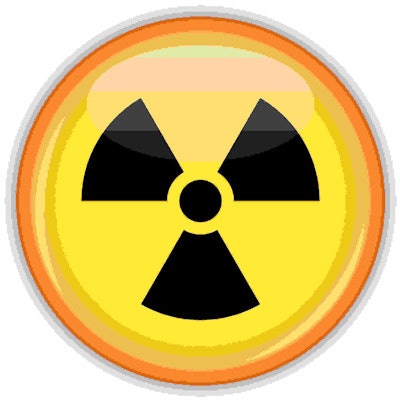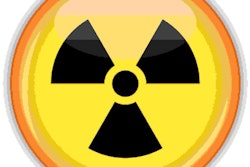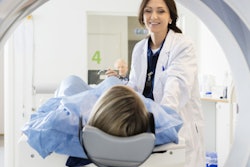
Many U.S. institutions have been exceeding radiation dose recommendations for CT lung cancer screening exams, according to a study published online September 23 in JAMA Internal Medicine. A possible solution may be to have a lead radiologist establish CT protocols at each screening facility.
The U.S. Centers for Medicare and Medicaid Services (CMS) and the American College of Radiology (ACR) recommend using an effective dose of 1 mSv or less and a CT dose index volume (CTDIvol) of 3 mGy or less for CT lung screening exams. The organizations have promoted these guidelines in light of concerns over the potential harms associated with excessive radiation exposure.
"Although the risk of radiation-induced cancer and resultant risk of mortality is low compared with the benefits of [CT] lung cancer screening using low-dose techniques, the risk of radiation-induced cancer rises in parallel with doses used," wrote lead author Joshua Demb, PhD, from the University of California, San Diego, and colleagues.
To evaluate the state of CT radiation exposure for lung cancer screening, the researchers examined radiation dose reports for CT lung screening exams performed at 72 U.S. institutions from 2016 to 2017. They obtained the data from the University of California, San Francisco's international CT radiation dose registry.
Overall, there was wide variation in the radiation dose used for CT lung screening exams at the different facilities, the researchers found. The average CTDIvol of the exams was 2.4 mGy and the average effective dose was 1.2 mSv, after adjusting for patient chest diameter.
Among more than 12,000 CT exams, 18% had a CTDIvol higher than the ACR guidelines and 65% had an effective dose higher than the guidelines. In addition, 21% of the institutions exceeded the recommended CTDIvol and 65% of the institutions exceeded the recommended effective dose.
Further analysis revealed that certain factors had statistically significant associations with an increased likelihood of higher CT radiation dose. With respect to CTDIvol, having an external medical physicist (as opposed to having a physicist onsite) and having any radiologist establish CT protocols (instead of a designated lead radiologist) both led to the use of higher than recommended CT radiation dose.
In contrast, institutions that had a single lead radiologist establish protocols reduced their likelihood of exceeding the recommended effective dose by 100-fold. And institutions that updated CT protocols annually were nearly six times less likely to exceed the recommended effective dose, compared with institutions that only optimized protocols "as needed."
| Factors that affect radiation dose for CT lung cancer screening | |
| Odds ratio (for CTDIvol > 3 mGy) | |
| Having any radiologist establish CT protocols | 12 |
| Relying on external medical physicists | 6.1 |
| Odds ratio (for effective dose > 1 mSv) | |
| Updating CT protocols only as needed | 5.9 |
| Having a lead radiologist establish CT protocols | 0.01 |
"Considering these factors (for example, allowing only lead radiologists to establish protocols) could have a meaningful impact on dose, and could be important areas to develop interventions to optimize doses of CT protocols," the authors wrote.
Institutions could further improve dose levels for CT lung screening by increasing the awareness of existing CT scan guidelines among radiologists, limiting the use of multiphase CT for lung screening, and providing feedback to radiologists on the doses they use, they noted.
"Dose-optimization practices may benefit from being tailored to specific practice types, as well as different organizational structures, to have a higher likelihood of meeting dose guidelines," they concluded.


















